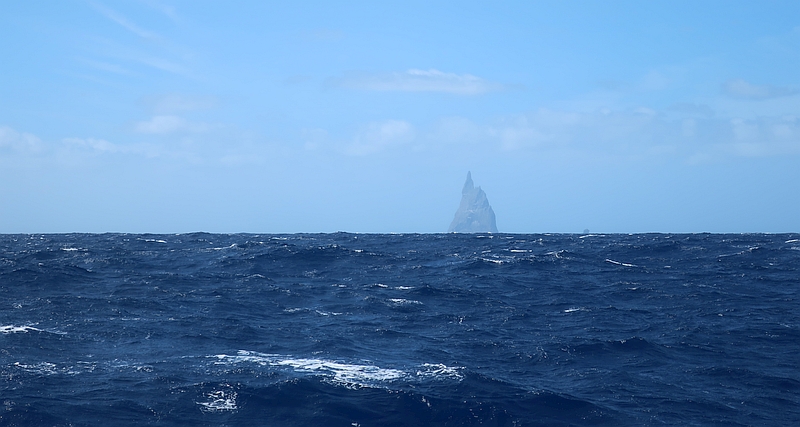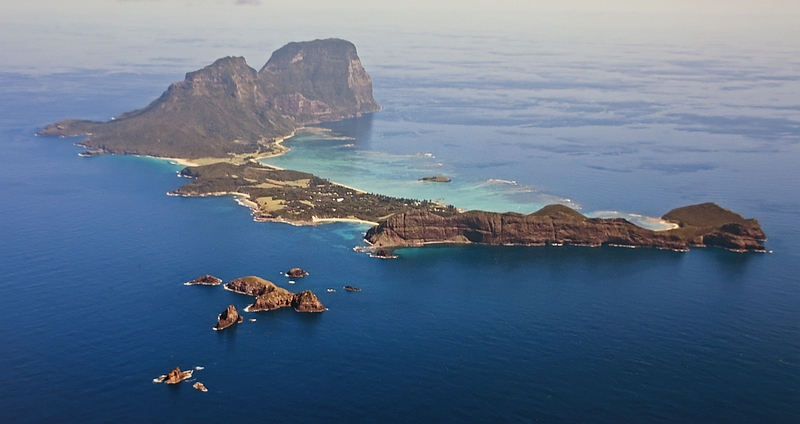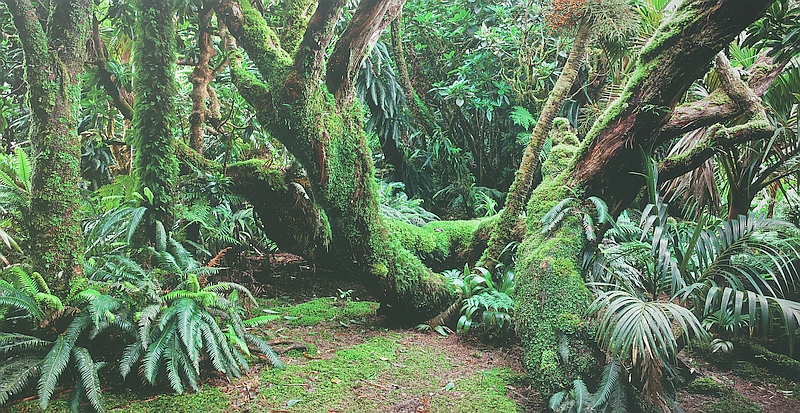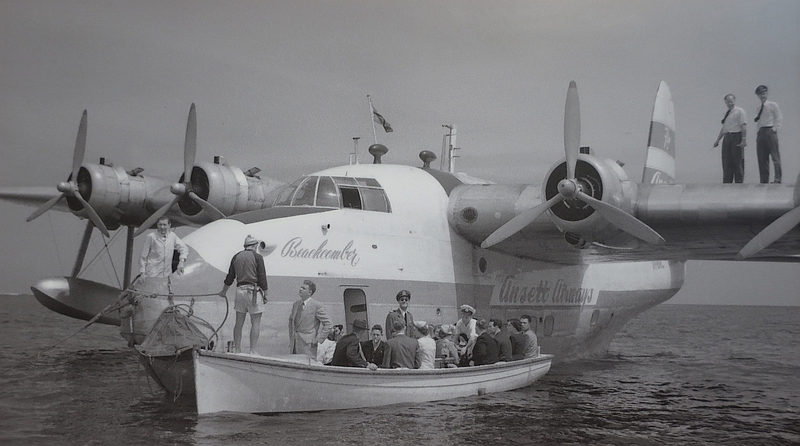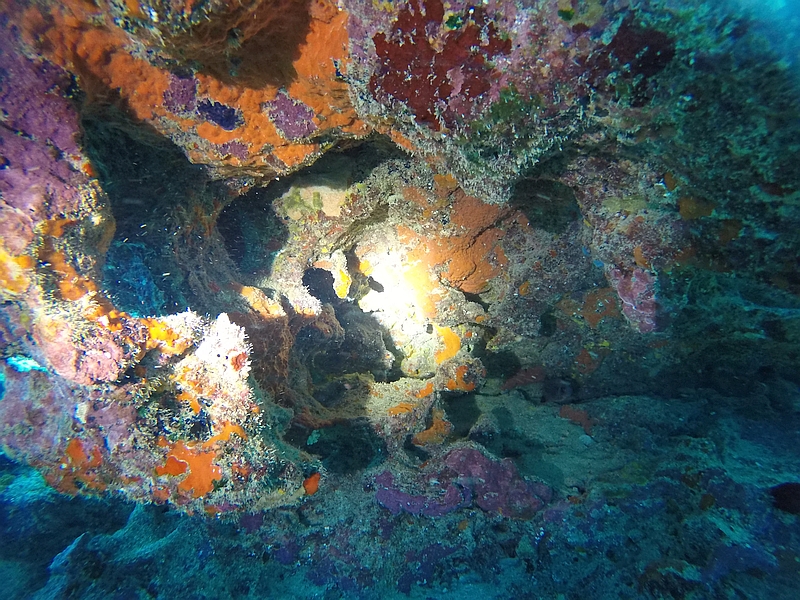|
Lord Howe Island (AU) 2018
Ocean Child departed New Zealand (Opua) on March 16. Crew were Leigh Christensen and Colin Bugge (both from Texas, USA). Our nominal destination was Newcastle, New South Wales (AU), although in actual fact we later entered through the port of Wollongong. Neither crew suffer from sea sickness... a great advantage. And both enjoy cooking. Of all the crew I have had on Ocean Child, no-one has ever put in as much thought and effort as Leigh did to prepare for the voyage. She even brought special gifts for Colin and me, as well as delicious snack-food. Leigh also did much reading to prepare for the journey.
Ocean Child had spent the summer in New Zealand. The summer of 2017-18 was characterised by unusually bad weather, with several tropical cyclones travelling south, one as far as the South Island. This was disappointing, with few opportunities for sailing and snorkelling. However our luck changed for our departure. The wind pattern seemed particularly favourable. A large stationary high in the Tasman Sea was directing east to southeast winds over Latitudes 30 to 35, (AU to NZ) the area of interest to us. Lord Howe Island lies at about 31o 30' S, 159o 15' E, just a little south of the South Pacific cyclone zone (the cyclone season is nominally 1 November to 30 April, so still current on our departure).
We reached Lord Howe Island (LHI) on Friday March 23, having travelled about 900 nm (800 nm as the crow flies) in 7 days. We had favourable winds almost every day; however large swells coming from the northeast and southwest made the trip unpleasantly rolly. A front came through from the southwest on the last night, with much rain and winds over 30 knots. We were running on a second-reefed mainsail and the storm jib (our genoa having ripped). Overall it was a good trip. We reached LHI having used only 90L of water (a record for OC).
Approaching LHI from the southeast, Balls Pyramid, at over 500m, points an impressive finger skywards. Below, another view of Balls Pyramid.
Above: Heaven! Our first night in the calm waters of the LHI Lagoon (northern passage).
Lord Howe Island viewed from the northeast. The large lagoon on the west side is sheltered from the prevailing winds.
Balls Pyramid and LHI are the remains of two closely spaced volcanoes, formed by the same tectonic hotspot which created Elizabeth Reef and Middleton Reef (to their north). Their terrestrial land area was once many hundreds of times larger, with erosion gradually taking its toll. This larger land-mass supported a wide variety of plants and animals, including the horned tortoise (see below) now extinct.
We left New Zealand travelling with a smaller but faster yacht, Frozzie. Below, the crews from Frozzie and Ocean Child.
From the left: Claudia, Leigh, Jon, Tristan and Colin.
Above, small roads wind through forest containing massive fig trees, with huge multi-root buttresses.
Humans reached LHI about 200 years ago. A few families here trace their occupancy back six generations. We were told one family owns about half of the tourist accommodation facilities (as well as their own private aircraft). Today there are about 350 residents, with tourist beds numbering 400.
Pigs and goats were introduced, and immediately prospered, as did rats and mice who came ashore uninvited.
Cloud forest may be found at higher altitudes.
Birds such as rails and woodhen feed amongst debris on the forest floor. Native fauna was badly affected by humans and their animal accompaniments. Woodhen particularly were reduced to about 30 birds, and were widely expected to become extinct. However a pest removal program, started in 1970, resulted in the complete removal of goats and pigs. Today, residents are only permitted to keep non-breeding pets. An ambitious rat removal program is planned to start in 2019.
LHI is nominally part of NSW Australia. Third-tier government is provided by the LHI Board. The economy of the island is essentially based on tourism. The island provides a peaceful (if expensive) 'paradise' for those wanting to get away from it all. It's rather like a trip back in time to the sort of relaxed and friendly community culture many parts of Australia had a century ago. Crime is almost unknown, and houses and cars are routinely left unlocked. Although internet is available, there is no cell-phone service.
Parts of the LHI coastal waters are designated sanctuary zones; however the areas outside those zones are heavily fished, with the larger species now no longer evident. In my opinion, the entire marine area should be designated as a sanctuary. This might affect tourism to some extent, as some visitors come for the fishing: there would of course be compensating tourism based on nature photography.
LHI has a great little museum. The remains above are those of a horned tortoise which once inhabited the island.
Tourists love exploring the island on bicycle. This photograph of a typical road gives you an idea why.... the whole island is just SO beautiful.
Exciting days.... tourists arrive at LHI lagoon on a Sandringham flying boat.... sadly now long gone.
Above, a pair of young white terns. This species provides one of the laziest examples of nest building... they don't! Apparently they select a suitable leaf and simply lay two eggs onto the leaf!
Ned's beach, below, (on the eastern side of the island) has a fish-food dispenser. You put in one dollar, and obtain maybe 50 g of fish food pellets.
Both tourists and fish love this! In my left hand you can see the small fish-food dispensing cup.
Above, here are the fish... this photo was taken in the water by my feet, only about 40cm deep.
Above and below, typical shallow water habitat at Ned's Beach.
The lagoon, on the west side of the island, is relatively sheltered, and is a convenient location for diving and snorkelling (below).
There are many caves, ledges and swim-throughs, enjoyed by both fish and divers.
We left Lord Howe Island at 7pm on Tuesday March 27.
While initially intending to undertake customs entry procedures at Newcastle, we changed our course and made an attempt to sail to Eden (on the AU mainland's SE corner). However we encountered strong head-currents, no doubt associated with a large ocean gyre powered by the Eastern Australian Current (the EAC). So we turned west, and after a day stop-over at Jervis Bay, we entered at the port of Wollongong on Tuesday April 3 (Easter Tuesday) .
That night we were invited to dinner with Gary Reid and Cathy Allen... and to stay the night. What a wonderful change from rocking around in Ocean Child! Gary was also very helpful in helping arrange replacement parts and repairs.
Leigh left Ocean Child to pursue land-based adventures. I was sad to see her go as she had contributed so much to the trip, especially her good humour - always good natured even in the face of the most trying conditions... which is more than I can say for the skipper.
Colin and I arrived at Eden on Sunday April 8, after a long and tedious stretch of motoring into light headwinds.
|
